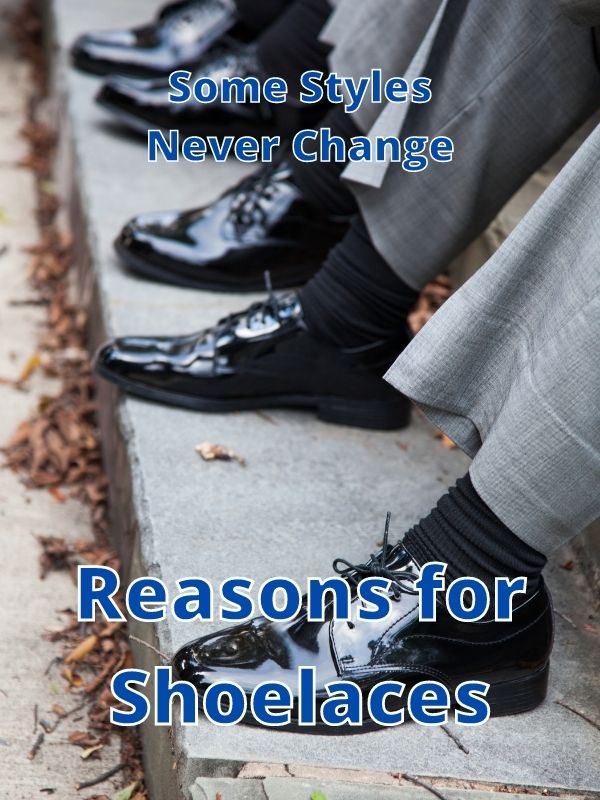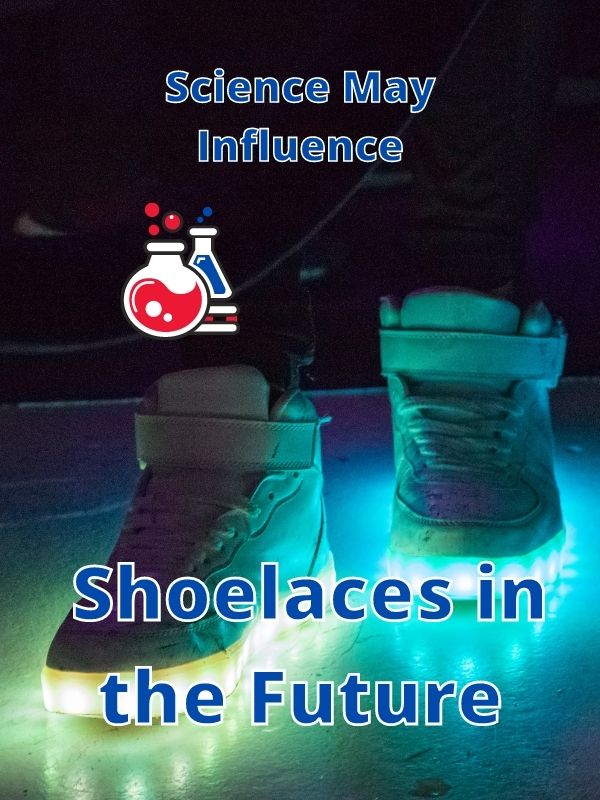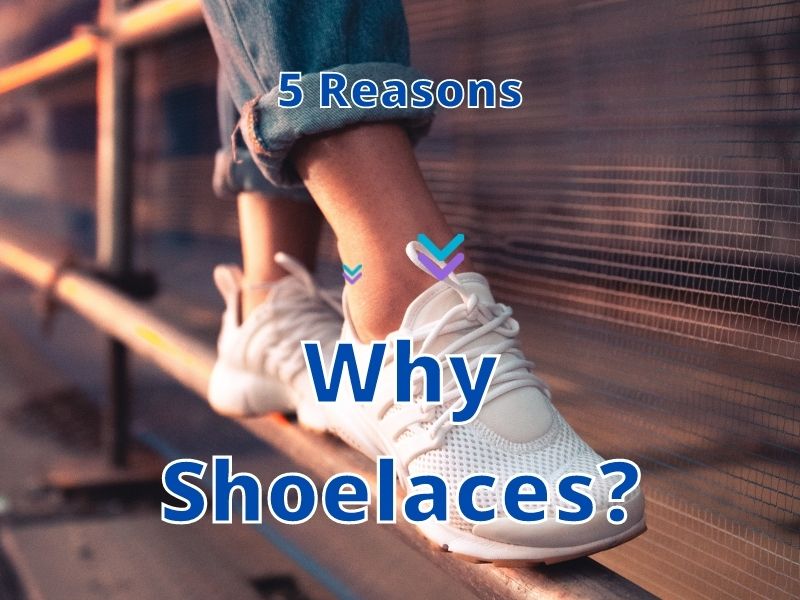I am starting to see more and more shoes that are slip-on and easy to wear no-tie shoelace shoes. These easy-to-use shoes are popular for many reasons, one being the reduction of time and trouble need to put on and take off your shoes. Yet, most of the shoes that I wear still need to be tied. Why?
Shoes still have shoelaces because:
- Shoe fashion demand shoelaces.
- High activity/sport shoes encourage shoelaces.
- Manufacturing changes take time.
- People are happy with the status quo.
- Cost of materials may be prohibitive
The more people start to wear slip-on shoes that have alternatives to laces, the more shoe companies will follow suit and make shoes that are easier to put on. Until that happens we can expect changes to occur slowly that will incorporate new technologies that people find helpful. Keep reading to find out why.
Table of Contents
The Reasons Shoes Still Have Laces

When I was a kid I had a pair of Velcro shoes. That made it easy for me to put on and take off my own shoes. When it came time for me to learn how to tie my own shoes, I practiced for several days until I finally go it.
Later when I was a kindergarten teacher, I saw kids with the same type of Velcro shoes I had, but many also had shoelaces. Throughout the years I ended up tying dozens and dozens of kids’ shoes because they didn’t know how.
This made me frustrated with shoelaces (and parents) and I wondered why so many kids’ shoes still have shoelaces when many young kids can’t tie shoes themselves. It was a big problem at least for many of the kindergarten students in my classes.
1. Shoe Fashion Demand Shoelaces
The shoe industry is all about variety. There’s a shoe for every type of person and every type of foot. There is so much variety that it is difficult to decide which shoe you really want to buy.
The fashion industry has pushed design, technology, color, and style to create the newest and sometimes wildest types of clothing and accessories (shoes). With the use of social media and social influencers, shoes have become popular regardless of how practical or helpful they actually are.
Shoelaces have a long history of use in shoes and although shoes can be made without them, their consistent use over time, especially in men’s dress shoes and most athletic shoes, makes it difficult for some types of shoes to any big changes.
Shoe designers will always design shoes that utilize shoelaces as a part of their shoe collection because that’s what most people will accept.
2. High Activity/Sport Shoes Encourage Shoelaces
When you are engaged in any type of high-energy activity you want your shoes to be snug to tight. My rock climbing shoes are super tight so they can keep my feet rigid. These shoes use shoelaces to keep my foot extremely snug.
Soccer, football, and baseball players need shoes that won’t slip around during intense pressure from running, sliding and changes in direction. Most use laces and some incorporate Velcro into the design.
Shoelaces are great at making shoes with just the right amount of snugness needed for all types of feet and sock combinations. Until better technology comes out, shoelaces are the cheapest way to get a good fit and hold feet in place well.
3. Manufacturing Changes Take Time
New manufacturing techniques can take time to implement. New machines might be needed or the creation of new parts. A regular pair of new shoes could take “about 60 days from when the order is placed to when the shoe can be packed for delivery.”(sneakerfactory.net)
If you have to change some of the tools, dies, or processes it could take much longer. Now one wants to invest in a product that won’t do well for the general public unless the cost to make it is minimal.
While shoe manufacturers could easily add elastic shoelaces to their shoes or Velcro straps, these aren’t always what the majority of consumers want.
Once more people want no more shoelaces on their shoes, I imagine this could lead to newer shoe technologies, like the transition from gas to an electric car.
If a new technology does come about that becomes popular, it may take time to ramp up production because new machines will be needed for the production process. Even then, some shoes will still have shoelaces because people love variety and style.
4. People are Happy With the Status Quo
While changes in shoelaces are not happening fast, the shoe industry as a whole has made great strides in changes to how shoes are made. From soles to midsoles, shoe design, and everything in-between.
They have manufactured a tremendous amount of variety. People have responded by buying more shoes. The shoe industry has grown tremendously over time and continues to grow. According to globenewswire.com “Athletic Footwear estimated at US$ 71.8 Billion in the year 2020, is projected to reach a revised size of US$ 100.3 Billion by 2027.”
With so much to love, people aren’t worried too much about changes to shoelaces. Some shoes are fulfilling that need already.
5. The Cost of Materials May Be Prohibitive
Any time you want to make a shoe, it costs a certain amount of money. Better materials and more difficult manufacturing techniques will add additional costs.
If a shoe starts adding stretchy material to the tongue of their shoes, so someone can slip on their shoes, this might add extra time and money.
Some materials cost more if there is less supply. Shoe manufacturers have access to low-cost materials that are often used in your average shoe on the market. Once a shoe company asks them to make something special or less common, the prices go up and it may be unprofitable for the shoe company to sell them.
Unless there is a lot of demand for a product, shoe companies won’t take big risks in making a shoe that is too different than what consumers are already happy with.
Why Shoes Will Likely Have Laces For Long To Come

When I look at the shoes that are available on the market today I can find almost exactly what I want and still have more options available if I change my mind. There’s doesn’t seem to be a big demand for shoes without shoelaces.
There is a demand for elastic laces and slip-on shoes, so some changes are occurring. In general, with the available options, I feel like most people are satisfied with the variety of available shoes.
I don’t hear people, except maybe parents and teachers of small children, complaining about shoelaces being a big concern of theirs.
Shoe Quality
The one thing that remains a constant and is being emphasized more than ever with social media, is the quality shoes.
Shoes are changing to meet the need of more and more groups of people. Each group has specific needs and usually a specific purpose for buying a shoe. Once they find a shoe that is quality, meets their fashion and function needs, they are willing to spend the money to buy it.
One reason shoes are starting to get more specific and function better for specific purposes is because of research. Science has played a role in how shoes are made.
Scientific Study
As research into running, walking, and comfort has been done, studies find that different shoes with different materials perform in different ways. Researchers are finding how shoes impact foot health and how shoes of different types might be better for people with various foot types.
One day, after more research we might find that shoelaces are less helpful than something else that has or will be invented soon. Then we might start to see a shift to using fewer shoelaces.
But until that happens you can expect that the shoe industry will continue to use shoelaces because they do a good job of securing feet in shoes.
Shoe companies will continue to do research to fine-tune their efforts to make even more precise shoes for individual needs and more variety. And Scientists will continue to test what shoes are best for the feet and the body. These efforts will result in new shoe designs, so many of which may not have shoelaces.
Final Thoughts
Shoelaces are sometimes seen as a right of passage for young children becoming more independent. Although at present there’s not a big push for dropping shoelaces from shoes, in the future, we may see a change if it makes financial sense and people start to accept it as an important change.
I recommend using elastic shoelaces for those who are tired of using shoelaces. I bought Caterpy Laces and love them. (See my review in this article) And on a personal note, parents.. please teach your child to tie their shoes or get them Velcro shoes or elastic laces. Your child’s teacher will be grateful.
Thanks for visiting Helpshoe.com

